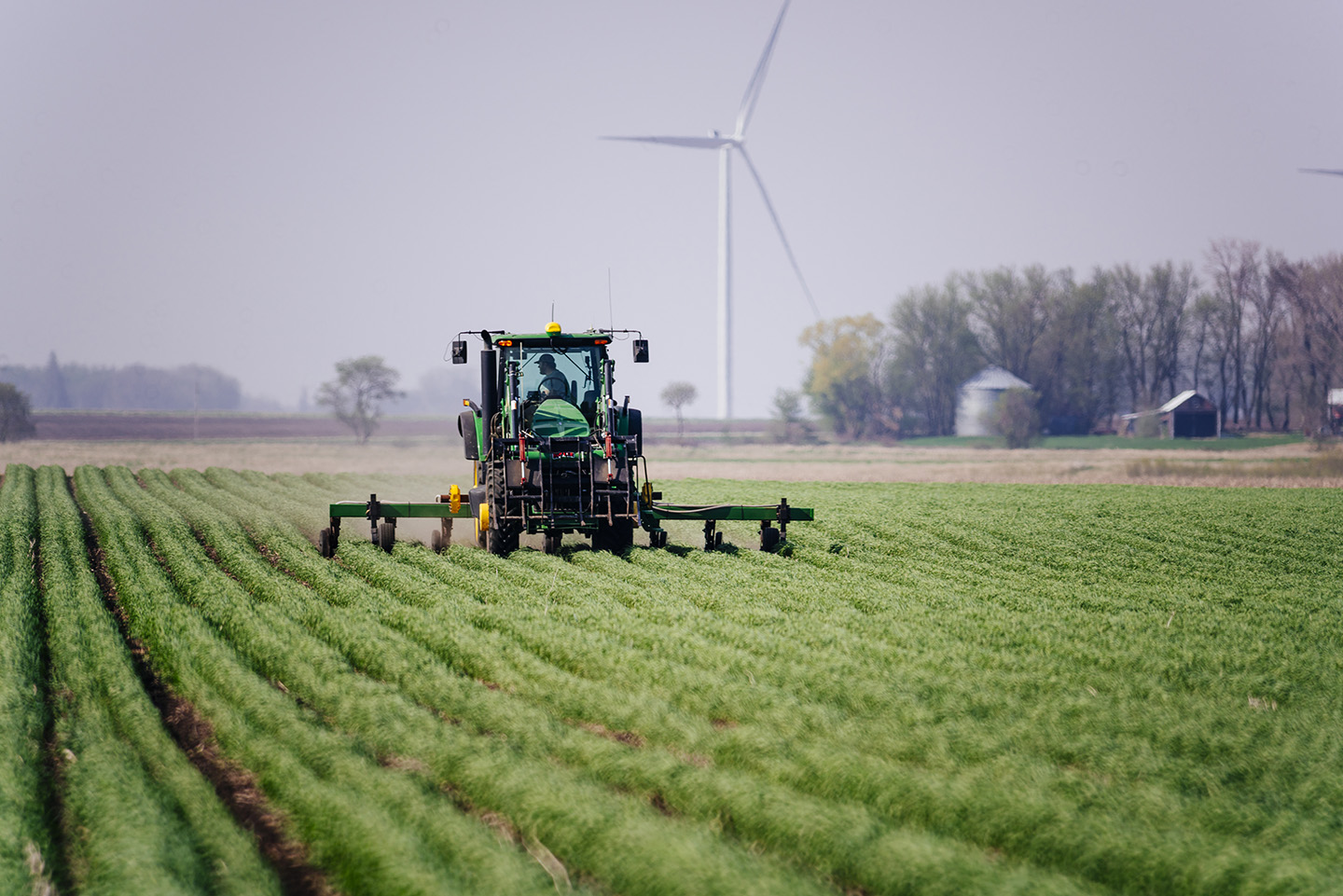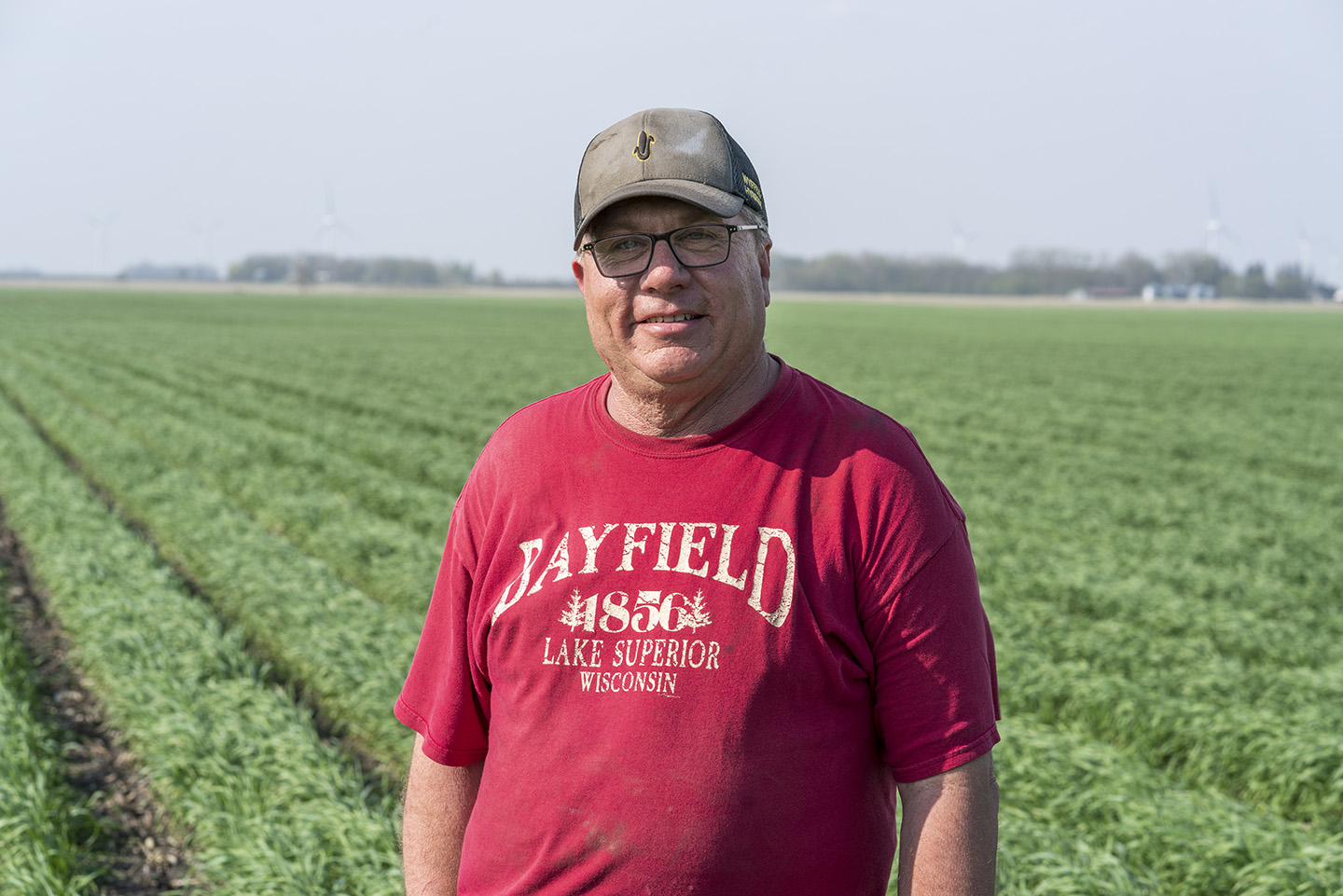
(Photo: Joseph Hopper/Iowa Soybean Association)
ISA trials hope to showcase maximum output
July 1, 2022 | Kriss Nelson
Can Iowa farmers successfully raise two crops in the same field in the same year? Specifically, growers in the northern parts of the state?
Relay cropping could achieve this goal. Farmers have been testing relay cropping with cereal and rye by experimenting through replicated strip trials, with the assistance of Northeast Iowa Resource Conservation and Development (RC&D) and the Iowa Soybean Association (ISA).
Ross Evelsizer, Northeast Iowa RC&D natural resources projects director, says he started the Multi- Cropping Iowa Project to explore relay cropping as a way for producers to expand their operations by growing vertically and diversifying while maintaining or improving environmental integrity. Relay cropping builds on the concepts of cover cropping in terms of soil health improvement and adds a revenue option for the farmers.
“The goal is to learn enough about the practice to lay the groundwork for easy widespread adoption for Iowa farmers,” Evelsizer says. “Relay acres with cereal rye and soybeans averaged $51 an acre higher net profit than mono-cropped soybeans.”
Theo Gunther, ISA senior research program development coordinator, says trials began in 2020 and continue this year.
Relay cropping involves seeding soybeans early in the growing season while the cereal rye is still in vegetative growth stages. The soybeans grow with rye. When the rye reaches maturity, it is harvested above the canopy of the soybeans growing below. The soybeans then proceed to maturity, generating two grain crops.
Gunther says they saw a need for trials due to the lack of side-by-side comparison data available.
“There were several farmers around the state that have done relay intercropping with small gains and soybeans on whole fields or parts of the fields. In previous years, we could only compare soybean yields to the field history, county yields or other plots nearby,” he says.
To help accomplish the trials, the RC&D pursued grants, with ISA in charge of facilitating the trials.
Relay cropping trials
ISA farmer-member Russ Olson of Northwood is in his fourth year of relay cropping and participating in trials. He uses 10-inch, twin-row spacing to drill his cereal rye on 30- inch centers and plants soybeans into the 20-inch gap in the spring.
Last fall, Olson applied 30 pounds of 32% nitrogen to the cereal rye. This spring, he used an additional 50 to 60 pounds of nitrogen on the rye before planting soybeans.
Olson says he has found that a later-maturing soybean works in the relay cropping system and is planting a 2.4 maturity bean this year. A later maturity bean should help avoid the beans flowering when the cereal rye is harvested.
Improved genetics could also boost the future of relay cropping. This year, Olson says they are experimenting with hybrid rye.
“With hybrid rye, there is a higher yield potential for increased quality, especially in a humid environment like Iowa,” says Gunther. But there is a catch. “We can’t save that seed and use it for cover crops; it has to go to market,” says Olson. “With our other varieties, we use our rye. We have it cleaned and use it for our cover crop seed.”

What outcomes are producers looking for with a relay crop?
Relay cropping allows producers to achieve maximum grain output from their farm by harvesting two crops, but the system has other benefits.
Olson says they use very few herbicides in their relay cropping systems.
“The rye does a good job suppressing weeds,” Olson says. “After rye is harvested, we might spray, if there is a need.”
There are also some soil health and environmental benefits to consider with a relay cropping system.
“The system doesn’t allow much nitrate nitrogen to be lost to surface water because there is something growing and available to take up nutrients year-round,” says Gunther.
Does relay cropping have a place in the future?
Olson believes there is a possibility relay cropping could become a staple on many farms.
“In southern Iowa, farmers see 50 to 60-bushel beans and 30-bushel rye. That is 100 bushels of grain off a soybean field,” says Olson. “I think we are a little too far north to expect those yields, but it shows enough promise I want to keep messing with it.”
Back